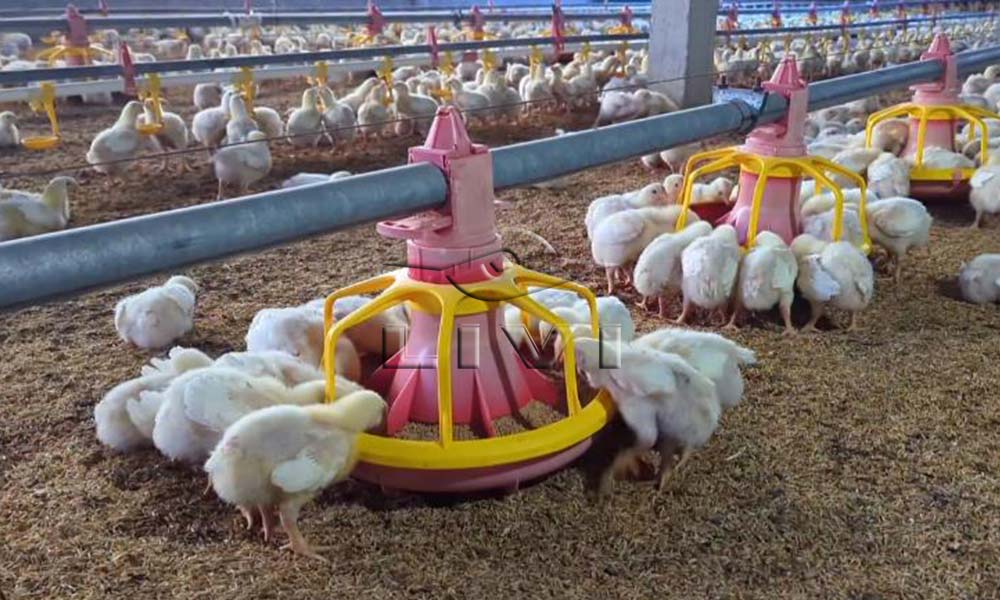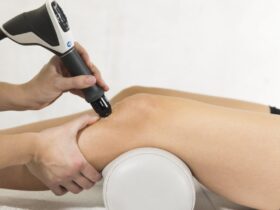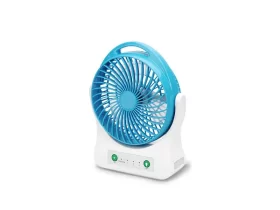Key Takeaways:
- Choosing the right poultry equipment is crucial for maximum efficiency and productivity.
- Poultry equipment includes housing, feeding, watering, lighting, and waste management systems.
- Consider factors like flock size, specific needs, and equipment durability when selecting poultry equipment.
- Investing in high-quality poultry equipment ensures optimal performance, reduces risks, and provides long-term savings.
- Incorporating advanced equipment like sensors, automation, and robotics can improve productivity and efficiency in poultry farming.
- Proper ventilation, environmental controls, and biosecurity measures are essential for maintaining health and safety in poultry farming.
- Regular equipment maintenance and hygiene practices prevent accidents and contamination.
- Improving feed efficiency with advanced feeding equipment and enhancing egg quality with modern incubation systems maximize profitability.
- Implementing environmentally-friendly practices in poultry farming benefits the environment and enhances farm sustainability.
Choosing the Right Poultry Equipment for Maximum Efficiency
When it comes to poultry farming, having the right equipment is crucial to ensuring maximum efficiency and productivity. There are various types of poultry equipment available in the market, each designed to cater to specific needs and requirements. Understanding the different types of poultry equipment is essential in making informed decisions for your farm.

Understanding the Different Types of Poultry Equipment
Poultry equipment can be categorized into various areas such as housing, feeding, watering, lighting, and waste management. Each category plays a vital role in maintaining a healthy and productive environment for your poultry. Housing equipment includes brooders, cages, and coops, which provide shelter and protection to the birds. Feeding equipment involves feeders and hoppers that ensure a steady supply of food. Watering equipment includes drinkers and waterers that provide clean water to the birds. Lighting equipment helps to regulate the bird’s natural cycle and promote growth and development. Waste management equipment includes systems for managing and disposing of waste effectively.
Factors to Consider When Selecting Poultry Equipment
Choosing the right poultry equipment requires careful consideration of several factors. Firstly, you need to assess the size of your flock and the space available on your farm. This will help determine the capacity and size of equipment required. Secondly, consider the specific needs of your poultry. Different bird species may have different requirements for housing, feeding, and watering. It is essential to select equipment that meets these specific needs. Additionally, consider the durability and quality of the equipment. Investing in high-quality equipment may require a higher upfront cost but can save you from frequent repairs and replacements in the long run.
The Importance of Investing in Quality Equipment
Investing in quality poultry equipment is crucial for the success and profitability of your farm. High-quality equipment not only lasts longer but also ensures optimal performance and efficiency. Quality equipment is built to withstand the harsh conditions of poultry farming and can withstand wear and tear. It also reduces the risk of equipment malfunction, which can lead to significant losses. Additionally, high-quality equipment is designed with safety features to prevent accidents and injuries to both the birds and farm workers. Even while there can be a higher upfront cost, the savings and long-term advantages make it an investment worth doing.
Optimizing Poultry Farm Productivity with Advanced Equipment
The advancements in poultry equipment technology have revolutionized the way poultry farms operate. Innovative equipment has made it easier to automate processes, increase efficiency, and improve overall productivity. Incorporating advanced equipment into your farm can provide numerous benefits and help you stay ahead in an increasingly competitive industry.
Exploring Innovations in Poultry Equipment Technology
The field of poultry equipment technology has witnessed significant advancements in recent years. Utilizing sensors and monitoring systems to gather information on temperature, humidity, feed intake, and bird behavior is one example of this kind of innovation in chicken farming. Farmers can optimize circumstances for their birds by making informed judgments and adjustments based on this real-time data.
Another innovation is the development of automated sorting and grading systems, which can save time and labor by accurately sorting eggs or poultry products based on size, weight, or quality.
Automating Your Poultry Farming Processes for Improved Efficiency
Because automation may increase overall productivity and streamline procedures, it is becoming more and more common in the poultry farming industry.
Automated feeding systems can accurately dispense feed at specific intervals, reducing wastage and ensuring birds receive the right amount of nutrition. Automatic egg collection systems can significantly reduce labor costs and minimize the risk of eggs getting damaged during the collection process. Installing automated lighting systems can help regulate the birds’ natural cycle and promote growth and productivity.
Harnessing the Power of Robotics in Poultry Farming
The use of robotics in poultry farming has been a game-changer in terms of efficiency and precision. Robotic systems can perform tasks such as cleaning, disinfecting, and even egg handling with incredible accuracy and speed. These systems can operate 24/7, ensuring optimal hygiene and reducing the risk of disease outbreaks. Robotic technologies also minimize the physical strain on farm workers, allowing them to focus on other critical tasks. For progressive farmers, investing in robotics may be costly initially, but in the long run, the benefits of higher production and lower labor costs make it an investment well worth it.
Maintaining Health and Safety in Poultry Farming
Maintaining the health and safety of your poultry is of utmost importance to ensure the well-being of the birds and the profitability of your farm. Implementing proper ventilation and environmental controls, along with strict biosecurity measures, can help prevent disease outbreaks and ensure a safe working environment for farm workers.
Ensuring Proper Ventilation and Environmental Controls
Maintaining air quality, controlling temperature, and preventing the buildup of hazardous gasses like ammonia all depend on proper ventilation in chicken raising. Systems for ventilation should be built to maintain ideal humidity and temperature levels while supplying enough airflow.
Additionally, environmental controls such as lighting and insulation can help regulate the birds’ natural cycle and create a comfortable living environment.
Implementing Biosecurity Measures to Prevent Disease Outbreaks
Biosecurity measures are essential to prevent the introduction and spread of diseases within your poultry farm. This includes quarantining new birds, restricting access to the farm, and implementing strict sanitation practices. Regular health checks and vaccinations should be conducted to detect and prevent potential disease outbreaks. It is also crucial to maintain proper hygiene and cleanliness in all areas of the farm to minimize the risk of contamination.
The Role of Equipment Maintenance in Preventing Accidents and Contamination
Maintaining your poultry equipment is key to preventing accidents and contamination.Equipment is kept in good working order and condition by routine maintenance and inspections. Equipment that is broken or defective might endanger the safety of farm workers as well as the birds.
Proper cleaning and disinfection of equipment, such as feeders, waterers, and cages, are essential to prevent the spread of diseases within the flock.
Maximizing Profitability and Sustainability in Poultry Farming
To ensure long-term profitability and sustainability in poultry farming, it is crucial to adopt practices that optimize feed efficiency, enhance egg quality and production, and promote environmentally-friendly farming methods.
Improving Feed Efficiency with Advanced Feeding Equipment
Feed accounts for a significant portion of the operating costs in poultry farming. Therefore, improving feed efficiency is essential to maximize profitability. Advanced feeding equipment, such as automatic feeders and precision feeding systems, can accurately dispense the right amount of feed to each bird, minimizing wastage and optimizing nutrient intake. These systems can also monitor feed consumption, allowing farmers to adjust feeding strategies accordingly.
Enhancing Egg Quality and Production with Modern Incubation Systems
Modern incubation systems have revolutionized the process of hatching eggs, resulting in improved egg quality and production rates. These systems ensure ideal circumstances for embryo growth by precisely controlling humidity and temperature. Automated turning mechanisms ensure even heat distribution and proper development of the chicks. In addition, advanced monitoring systems allow farmers to track and analyze crucial parameters, such as fertility rates and hatchability, to optimize the hatching process.
The Benefits of Implementing Environmentally-friendly Practices in Poultry Farming
The environment can be greatly impacted by poultry rearing. Putting eco-friendly techniques into practice improves your farm’s sustainability and lowers its carbon footprint. For instance, utilizing solar energy or other renewable energy sources might lessen dependency on conventional energy sources.
Proper waste management systems, such as composting or anaerobic digestion, can convert poultry waste into valuable resources such as fertilizer or biogas. Implementing sustainable farming practices not only benefits the environment but can also improve your farm’s reputation and appeal to eco-conscious consumers.






